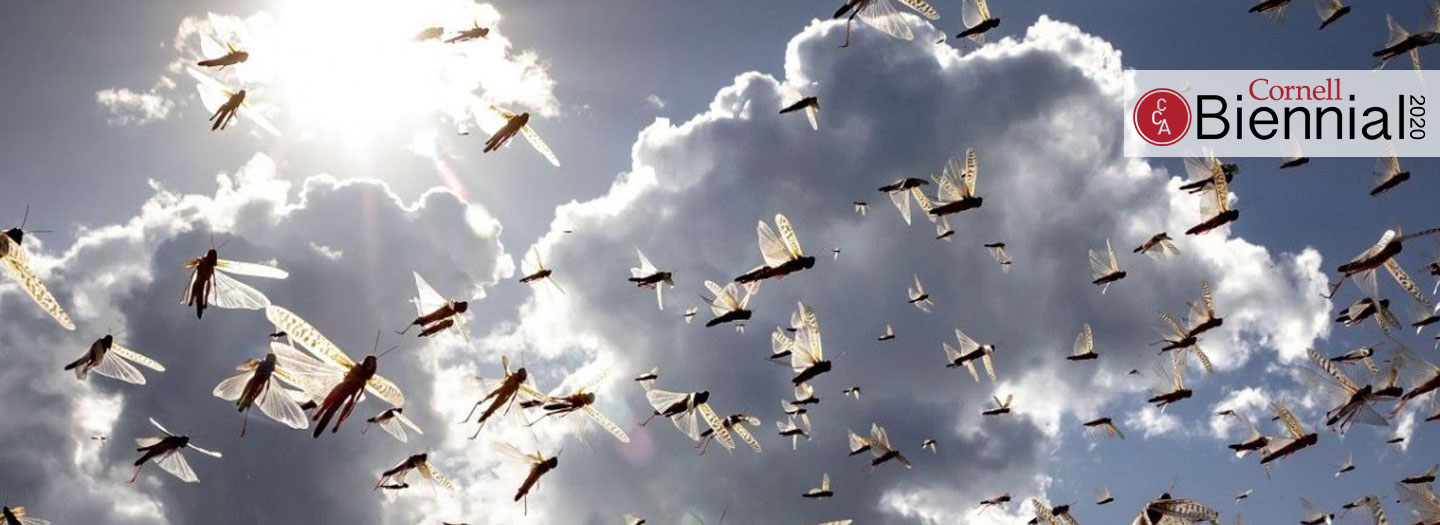
NATASHA RAHEJA
A Gregarious Species
What do bugs and borders have to do with each other? In 2019, thousands of gregarious desert locust swarms flew across the India-Pakistan border and ravaged the fields of farmers. In the same year, Indian government officials described migrants as termites and infiltrators at right-wing political rallies across the country. Farmers started to wonder if locusts were bioweapons from hostile countries to destroy crops. Scientists met at the India-Pakistan border to discuss how to manage this “transboundary pest.”
This experimental, found-footage video, “A Gregarious Species,” contemplates borders, migration, and human-animal relations through a dizzying assembly of mobile phone videos of locusts, scientific webinars, and nationalist political rallies. Scientists use the term gregarization to refer to the process through which solitary desert locusts aggregate and become a swarm. A gregarious locust swarm acts in unison and cannot be stopped at international borders. The title, “A Gregarious Species,” is at once a celebration of the profuse force of human-animal sociality and also a critique of the ways border regimes deny a cross-border sociality to human migrants. As the Indian Parliament has recently passed a controversial bill that expedites citizenship for Hindu refugees from Pakistan while intensifying efforts to expel Muslim “infiltrators” from Bangladesh, this piece comments on the selective porosity of borders and the ways that human-animal discourses shape the simultaneous welcome of some populations and refusal of others. Together with dense sounds and visuals of locusts, the video considers the socio-political and biological force of swarms that defy borders.
This piece is part of a broader creative inquiry about the sociopolitical implications of how humans naturalize borders for each other and non-human animals differently. How migratory animal treaties, for example, protect bird flight and mobility, prohibiting US-Mexico border officers from shooting at birds, while US politicians in the executive office advocate for spiked border walls that impale human migrants. Contemplating the ecology of the international India-Pakistan border, the digitality of mobile phone video circulation, and the sociality of human-animal discourse and migration, the film asks how humans can look to animal swarms and learn about the “promise of the crowd and the threat of the multitude,” toward the necessary fashioning of alternative sociopolitical orders.
Natasha Raheja (IN)
Natasha Raheja is a documentary filmmaker and social scientist working as an Assistant Professor of Anthropology and Performing and Media Arts at Cornell University. Her current writing and film projects explore questions of migration, belonging, and citizenship across the India-Pakistan border. She received her PhD in Anthropology from NYU (2018), and her BS in Biology and MA in Asian Cultures and Languages from UT Austin (2008; 2010). Natasha is the director of Cast in India, an observational portrait of the Indian metal workers who manufacture New York City manhole covers.